 |
|||||||||||||||||||
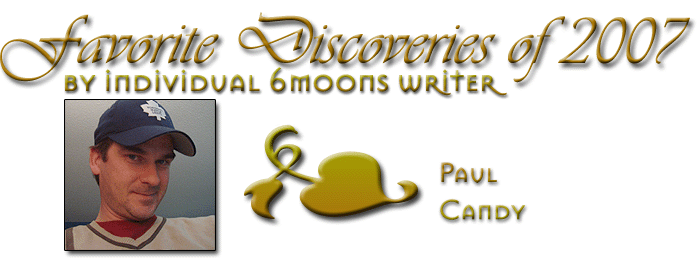 |
|||||||||||||||||||
It seems that every year, I'm finding it increasingly difficult to limit my favorite discoveries to a mere five components. Since I am permitted to pursue products that interest me and as my criteria for what I consider ideal in audio becomes more defined plus my growing experience, that all pretty much increases the likelihood of many very positive reviews. Perhaps I should limit myself to writing five reviews per year? Writing a favorites list would then be a snap. |
|||||||||||||||||||
 |
|||||||||||||||||||
Biggest surprise this year? Class D amps don't suck. If my experiences with Red Wine Audio's Tripath-fueled Signature 70 monos and Audio Zone's forthcoming Hypex-equipped amps are any indication, these new-fangled designs have plenty of potential of performing extremely well. Both amps seem to straddle a middle ground between the virtues of traditional solid state and vacuum tubes. If I have learned anything over the last few years, it's that you can't always judge a component solely by its technology. It always comes down to implementation. Nevertheless, the amp that really took my breath away this year was a good ol' tube amp, in this case the Audiomat Opéra Référence. Essentially a carefully enhanced version of a circuit that has twenty years of refinement behind it, the Opéra Référence was a superb conveyor of musicality and the artists' intent. It offered excellent lit-from-within inner resolution -- the kind that good SET designs are renowned for -- and an uncanny ability to unravel the most complex musical details. It was rich, full bodied, never electronic or artificial and as for listening fatigue - pha, what listening fatigue? Unlike Tannhäuser wallowing in the flesh pots of the Venusberg, I did not tire of the wanton debauchery. I simply loaded up on vitamin E and Viagra. |
|||||||||||||||||||
 |
|||||||||||||||||||
Another fine discovery was Grand Prix Audio's Monaco equipment rack. I never thought I'd recommend a $5000 rack but it will change the way you assign hierarchy in component categories. In my review I wrote, "I'm convinced that if you're happy with your present system and want to maximize its performance, adding a Monaco will reap bigger rewards than the latest hot preamp of the month or those rare NOS 300Bs you've been saving up for. Since I started my audio scribbling at the moons, no product has surprised me more nor impressed me to the extent the Monaco has. It has become an integral part of my system and will no doubt do the same for yours". |
|||||||||||||||||||
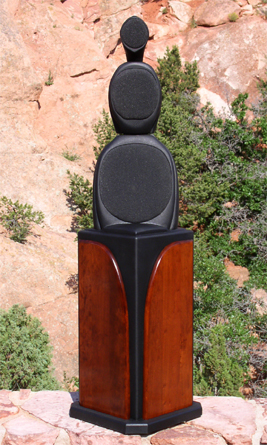 |
The Green Mountain Audio Calypso was also a favorite of 2007. I miss these unique-looking time coherent speakers immensely. While I didn't have both in house simultaneously, I'm sure the Audiomat and Calypso would have been an excellent match. I concluded my review thusly, "Their ability to disappear and throw a huge 3D soundstage with focused life-like images was uncanny as was their low-level resolution, transient fidelity and micro/macro dynamic ability. Tonally, the Calypsos were well balanced with an extended and intelligible bass, a lovely well defined midrange and a detailed yet sweet treble. They displayed a sense of rightness that was remarkable and unmatched by anything else I have heard. All these characteristics will go a long way in fooling the listener into believing they're hearing the real thing and not some hifi abomination." |
||||||||||||||||||
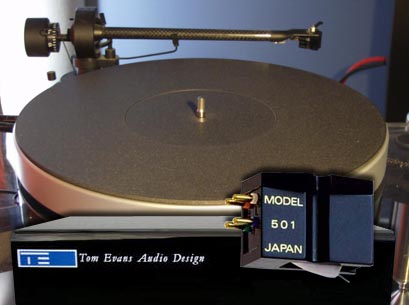 |
|||||||||||||||||||
| While not officially reviewed this year, I spent time with an excellent affordable analog front end consisting of Shelter's 501 cartridge, Tom Evans' Microgroove phono stage and Boston Audio's carbon-based turntable | |||||||||||||||||||
| mat. This particular package came courtesy of Rob Doughty at Applause Audio while I was reviewing the Audiomat amp. Rob opined that this was the best-sounding analog rig he's heard under $2,000. Add a Pro-Ject RM 5 or Rega P3 and you'll have a killer low-noise rig that majors on dynamics, speed and transient fidelity. Compared to my Pro-Ject/Ortofon/Herbie's Way Excellent Mat rig, this package offered far greater gain, reduced noise floor, increased slam and a more tactile presence. Music felt more alive and visceral. Definitely not for the faint-hearted. |
|||||||||||||||||||
| While my formal review won't hit the net until the new year, Cullen Circuits' modified PS Audio Digital Link III DAC is currently having its way with me. Frankly, I'm a little shocked by how good this little gem is. Cullen Circuits might be a new name for some but they have been the primary builder and design consultant of all PS Audio products as well as many other audio firms including CAT, Camelot and Genesis Technologies. Who better to offer mods than the folks who designed and built the gear in the first place? This particular mod, unlike most others I am aware of, actually improves the component's circuitry. While upgraded caps, resistors and connectors are included, Cullen goes a step |  |
||||||||||||||||||
| further. Instead of feeding the PPL (phase-locked loop) with an add-on low jitter clock as other mod firms do, Cullen instead rips out the PPL chip and adds two low jitter clocks to support the SRC (sample rate converter). This apparently results in considerably more effective jitter reduction. There's a lot more to it than that but you'll have to wait for my upcoming review. I shall also compare the modified unit directly to a stock DL III which is a fine sounding DAC in its own right. While I have had little success with asynchronous upsampling in the past, this particular implementation sure sounds different. Meaty, beaty, big and bouncy yet also smooth as cotton and blessedly free from anything remotely resembling Redbook glare or rhythmic reticence, the Cullen DL III is excellent value and performs considerably higher than its price suggests. For a fiver less than $700, this is one heckuva sweet deal. More to follow but if you own a DL III, buy yourself a Christmas present and pimp out your DAC. | |||||||||||||||||||
 |
Honorable mention: I reviewed Audience's Maestro speaker and interconnect cables over three years ago, quite favorably as I recall, and while I've been allowed to hang on to them, they have resided mostly in our TV/HT system. I do pull them out on occasion when reviewing other equipment and I continue to marvel at their consistently smooth, easy-going nature and their ability to match well with | ||||||||||||||||||
| any component. When other cables fail, these ones just keep plugging along. They remind me of the steady, dependable workman-like 15-20 goal per season hockey player who is generally overlooked in favor of the 50-goal superstars but who is the backbone of any decent hockey club. For me, the Audience Maestros are the Mike Fisher and Darcy Tucker of audio cables. They won't always turn your head with a flashy dangle or spinorama but you can count on them to grind it out along the boards each night and pop in the odd biscuit. Audience's powerChord is also the most consistent AC cable I have tried. Dynamics and openness are its forté no matter what component you hook it up to. If you are looking for decent affordable cables, then consider the Maestro and powerChord. |
|||||||||||||||||||
The Hadouk Trio - Live at FiP [Melodie 003] I first became aware of this recording through a track on a compilation disc Marja & Henk sent me a couple of years ago. It certainly put the hook in me and I eventually tracked down this wonderfully recorded disc earlier this past year. Their name derives from the hajouj (an African three-string bass) and the doudouk (an Armenian double-reed instrument). The Hadouk Trio offers a heady, mystical, world-beat blend of Middle Eastern and Western musical forms. There's no new age noodling here. This is fascinating and entertaining music that has delighted anyone I have played it for. So much so I am continually pestered for copies. |
|||||||||||||||||||
 |
|||||||||||||||||||
Grinderman [Anti 86861] Grinderman is a glorious return to the angry, venom-spewing Nick Cave of old à la Birthday Party and early Bad Seeds. With the Bad Seeds, Cave's music had evolved into a more poetic and ballad-orientated style in recent years. Seeking an outlet for the fury and vitriol of old, Cave formed Grinderman with Bad Seeds alumni Martyn Casey on bass; Warren Ellis on guitar, electric bouzouki and violin; Jim Sclavunos on drums; and Cave on vocals, keyboards and guitar. Equal parts post-punk noise and garage band blues, Grinderman creates a wild, unhinged rock 'n' roll racket that will have you either cranking up the volume or running for cover. With song titles like "Depth Charge Ethel", "Love Bomb" and "Get It On", you'll know what to expect. I'm particularly fond of "No Pussy Blues", a hilarious yet menacing ditty that fairly accurately chronicles my adolescence. A great record to chase out visiting relatives who have overstayed their welcome. And I can personally guarantee that it will keep the Jehovah's Witnesses from knocking on your door too. |
|||||||||||||||||||
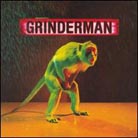 |
|||||||||||||||||||
| Richard Wagner - Parsifal [Arts Music 43027-2] & Die Meistersinger von Nürnberg [Arts Music 43020-2] Languishing in the vaults for one reason or another over the decades, these two magnificent sets are easily among the top two or three of each opera's available recordings. Rafael Kubelik's Wagner has generally been overshadowed by jet-set conductors such as Karajan and Solti which is too bad because Kubelik's Wagner is terrific - lyrical, translucent and free of interpretive quirks with excellent preservation of the long line. There's a weird sense of natural onward flow, inevitability, timelessness -- call it what you will -- that has consistently held my attention since I picked up both recordings this past year. The Parsifal just glows and the Meistersinger effectively portrays all the humor and humanity in this most sunny and probably most accessible of Wagner's works. Singing and cast are generally excellent and far better than any recent recording I can think of. Sound quality is also excellent. |
|||||||||||||||||||
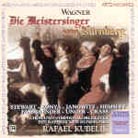 |
|||||||||||||||||||
| La Chimera - Tonas y Tonadas [MA M072A] Tonas y Tonadas or Tones and Ballads is La Chimera's follow up to their excellent Buenos Aires Madrigals disc on MA Recordings. Like that disc, this one is a curious yet ingenious blend of seemingly disparate music. While the first linked Italian renaissance music with Argentine Tangos, this new one pairs early Spanish music with South American folk songs. Call it early music fusion. Whatever you call it, it's excellent. Viola da gamba, lirone, cello, guitar, South American flute, double bass, lute and voices are all combined in a spicy, tasty brew in a wonderfully transparent recording. While many audiophile labels are content to issue endless streams of terrific sounding but completely vacuous pablum, MA is cutting a new path with some very clever and imaginative programming. |
|||||||||||||||||||
 |
|||||||||||||||||||
| Beethoven - Symphonies No 3 & 8 [RCA 13066] With so many available recordings of these warhorses, any new one has got its work cut out for it. Too many releases of these oft-recorded works come across as bland, unimaginative and with little character or insight. This one got me by surprise. Wow. Checking out various new releases at HMV over their headphone listening stations, I was expecting another lame lackluster run-through. Paavo Järvi and his Bremen-based cohorts blow the cob webs off both of these symphonies. Dynamic, swiftly propulsive, urgent yet perfectly balanced these readings are so completely revealing of individual lines and subtle details, it will seem you are hearing these works of the first time. Available on hybrid SACD, this is a recording to add to your collection even if you already have several versions of these two symphonies. |
|||||||||||||||||||
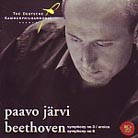 |
|||||||||||||||||||
Jean-Phillipe Rameau - Une Symphonie Imaginaire [Archiv 474 5142] Marc Minkowski carefully assembles a clever program of 17 movements from various Rameau works such as Zaïs, Castor et Pollux, Dardanus, Hippolyte & Aricie and Les Indes galantes. This isn't just a random collection of lollipops. Each piece is carefully placed within this imaginary symphony to create an overall cohesive feel and mood. The music is imaginative, colorful and played with plenty of verve and panache by Minkowski's Les Musiciens du Louvre in this fine sounding live recording. Incidentally, this is one of the missus's favorite recordings from this past year and as such, gets played a lot. I'm a happy man. |
|||||||||||||||||||
 |
|||||||||||||||||||
 |
 |
||||||||||||||||||
 |
|||||||||||||||||||